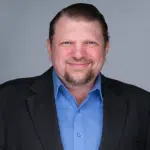The News: DZS, a supplier of access, optical, and cloud-controlled software-defined solutions, showcased many of its innovations and insights at Fiber Connect 2023. Read the full press release on the DZS website.
FC23: DZS Readies Portfolio for BABA Fiber Era With DZS FiberWay
Analyst Take: DZS deftly spotlighted its Build America, Buy America (BABA)-ready Access Edge, Subscriber EDGE, Optical EDGE, Cloud EDGE, and new FiberWay solutions at Fiber Connect 2023. Notably, FiberWay is developed specifically to provide a comprehensive hardened edge platform that meets the deployment challenges of fulfilling the unserved and underserved market segments.
DZS BABA-ready products include:
- DZS Xtreme, provides proven AI for automated, cross-domain network and service orchestration.
- DZS Saber 4400, an environmentally hardened platform that seeks to redefine the economics of coherent optical metro and edge transport and supports a breakthrough small form factor multi-degree CDC Flex-Grid ROADM functionality.
- DZS Velocity V1, V2, and V6 optical line terminal (OLT) solutions come in a range of form factors from 1RU to 6RU, supporting up to 25,000 subscribers in a non-blocking architecture with the capacity to allow in-place upgradeability from 10G (gigabit) passive optical networking (PON) to 50G PON and beyond.
- DZS CloudCheck and Expresse, AI-enabled, cloud-based software solutions that can enable operators to monitor, manage, and optimize home Wi-Fi networks with support for a wide array of customer premise equipment (CPE) as well as providing network-wide service assurance.
- DZS FiberWay, purpose-developed as a comprehensive, hardened edge broadband solution aimed at bridging the digital divide by drawing from the company’s DZS Cloud, Velocity, and Saber portfolios and supplemented by partners.
From my view, the DZS Xtreme offering interweaves the access, transport, and mobile components and network domains into a unified fabric that can empower operators to develop services personalized to the specific requirements of subscribers such as content streaming, telehealth, and gaming. Additionally, I see the Saber 4400 as particularly well-suited for US middle mile broadband programs since it inherently fulfills BABA objectives by being fully made in the US.
Of note, the DZS Velocity portfolio also has 14- and 16-slot chassis-based form factors, which augment the V1, V2, and V6 OLTs, that can all be deployed in centralized and disaggregated architectures supported by advanced software-defined networking capabilities.
I find that the DZS CloudCheck and Express solutions meet the topmost Wi-Fi oversight demands of operators by using contextual analytics and machine learning (ML) algorithms to proactively optimize subscriber Wi-Fi networks and assure an end-to-end quality of experience. As such, the two solutions are primed to assist operators in providing an improved subscriber experience while reducing truck rolls and overall support costs.
Key Takeaways: DZS Primed for Key Role in BEAD Funding With BABA Credentials
As background, Congress passed BABA, requiring that fiber networks funded by the Broadband Equity Access and Development (BEAD) Program need to use components that are at least 55% made in the US. Recently the National Telecommunications and Information Administration (NTIA) issued a proposed waiver to some Buy America requirements for BEAD recipients. As such, the NTIA is proposing the following waivers to Buy America provisions including that the overclad cylinder of fiber optic cables and enclosures such as pedestals, terminals and fiber distribution frames that house active electronics and fiber splits or spice may be sources outside the US.
However, all electronics in BEAD Program projects may use components sourced outside the US with the exception of four categories of electronics including OLTs, Remote OLTs, OLT line cards, optic pluggables, and optical network terminals (ONTs) and optical network units (ONUs). From my perspective, these are the fiber crown jewels for BEAD-funded builds, aimed at reducing the digital divide throughout underserved and unserved areas and as such, bode well for the DZS prospects including the new DZS FiberWay proposition in particular.
Accordingly, I anticipate that DZS FiberWay can enable rural operators to streamline their broadband deployments through simplified management of multi-gigabit fiber networks with auto-provisioned, AI-infused, and cloud-enabled operations infrastructure in full solidarity with BABA funding mandates.
Disclosure: The Futurum Group is a research and advisory firm that engages or has engaged in research, analysis, and advisory services with many technology companies, including those mentioned in this article. The author does not hold any equity positions with any company mentioned in this article.
Analysis and opinions expressed herein are specific to the analyst individually and data and other information that might have been provided for validation, not those of The Futurum Group as a whole.
Other insights from The Futurum Group:
Calix: Decisive Player in ALLO’s New Sustainable Financing
FC23: Plume Launches Intelligent Home Security to Boost Home Experience
Clearfield Shows the Integral Role Fiber Plays in 5G Evolution
Author Information
Ron is an experienced, customer-focused research expert and analyst, with over 20 years of experience in the digital and IT transformation markets, working with businesses to drive consistent revenue and sales growth.
Ron holds a Master of Arts in Public Policy from University of Nevada — Las Vegas and a Bachelor of Arts in political science/government from William and Mary.







